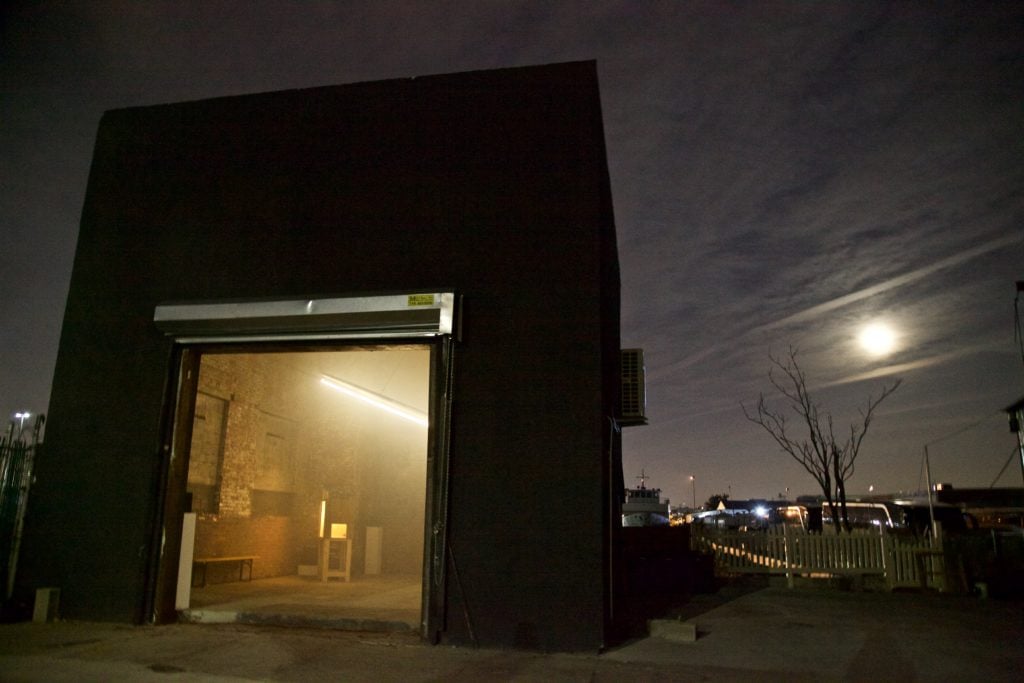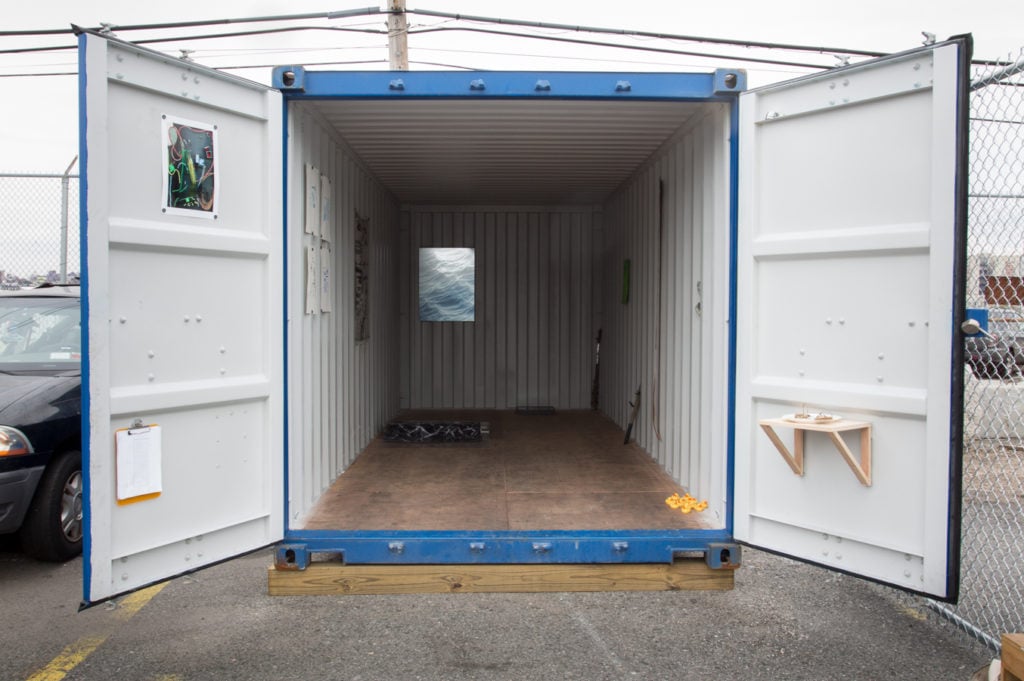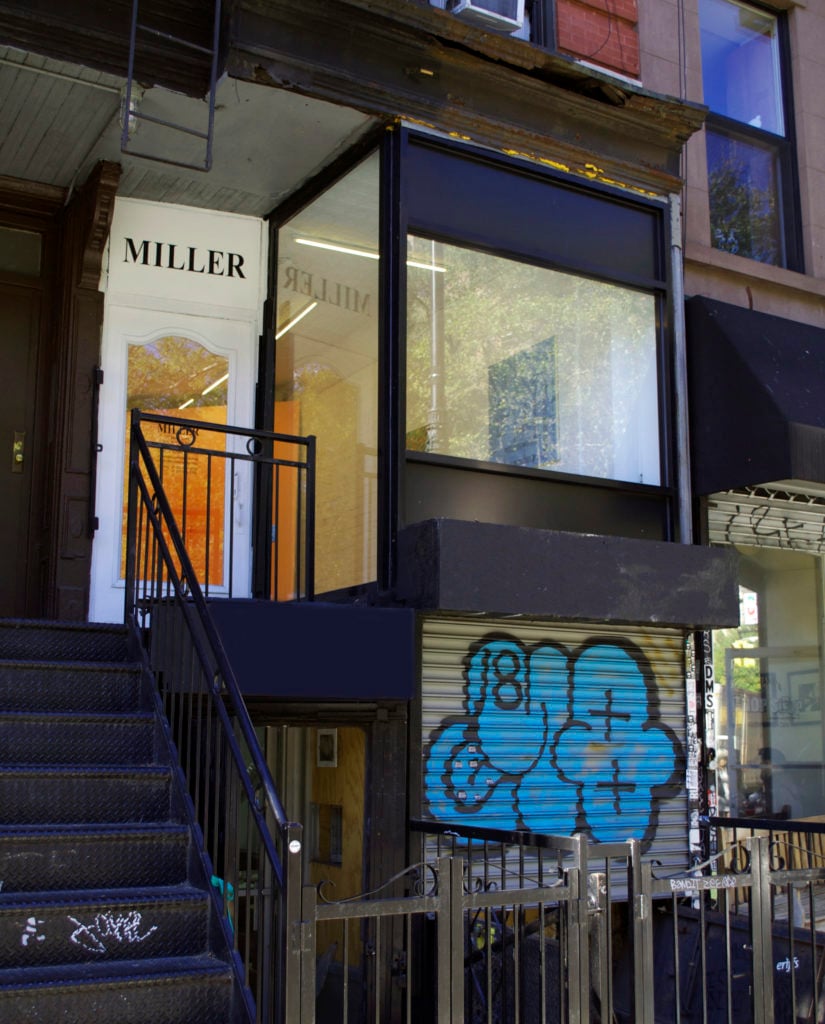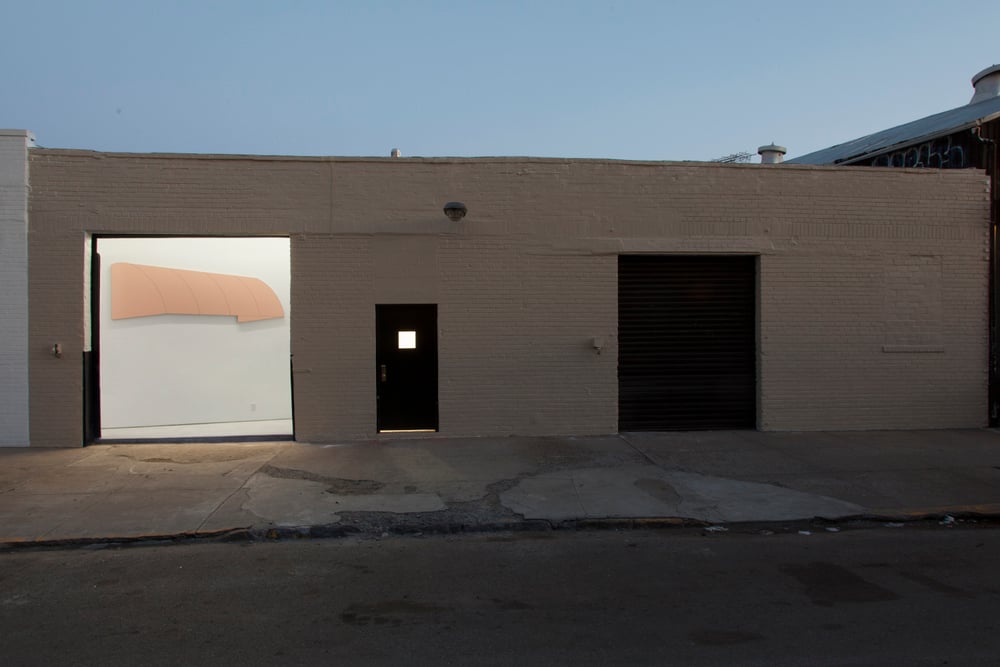Galleries
5 New York Alternative Art Spaces You Need to Visit Now
New York's underground art scene is alive and well.

New York's underground art scene is alive and well.

Nestled in the cracks of New York’s all-encompassing art scene are an impressive number of alternative art spaces. And these spaces, though hardly visible, co-exist alongside the established galleries that we all know and love.
Situated in tiny storefronts, loft apartments, or abandoned buildings, alternative art spaces are usually run on shoestring budgets by young and ambitious curators, gallerists, and artists showing the work of their friends and contemporaries. Collectively, they prove that the grassroots art scene nostalgic New Yorkers love to proclaim dead is in fact alive and well—if you know where to look.
We did the boots-on-the-ground legwork for you and selected, from locations that you can visit right now, a group of the most interesting alternative art spaces in the city.
The Chimney (202 Morgan Avenue, Brooklyn)
A stunning cavernous exposed brick industrial space in the heart of Bushwick, this raw black cube boasts 23-foot ceilings. It also has the virtue of abandoning the ‘white cube’ format.
Speaking to artnet News, partners Clara Darrason and Jennifer Houdrouge explained that the unique space was a major motivation for opening a gallery. “The Chimney is a very raw and tall black cube with no windows, overhung by a condemned chimney, located on the edge of the Newtown Creek,” Houdrouge explained. “It appears as a true vestige of an industrial era, in a neighborhood that now welcomes art galleries and tech companies.”
The French natives invite artists to create site-specific works for the unusual setting. “We work with artists who are interested in being challenged by the space and who wish to make an exhibition that responds to the architecture of the building,” Darrason said. “Many artists have reconsidered their work after exhibiting at The Chimney and see their exhibition as a critical point in their practice.”
The Chimney shows an array of international emerging artists that engage with installation. Among others the Chimney has shown: glass sculpture by Andrew Erdos, an installation of Indonesian gongs by Aaron Taylor Kuffner, a giant iceberg installation made from sustainable material by Finnish artist Riitta Ikonen, and a video projected on a monumental curtain by Indian artist Kiran Chandra—as well as the current show by Raphaele Shirley.
“Both of us have moved to New York only two years ago, which is a challenge in itself but also an opportunity,” Houdrouge added, emphasizing her desire to strengthen the gallery’s connections to both France and northern Africa in the future.

Fastnet, Brooklyn. Photo: courtesy of James Powers.
Fastnet (Columbia Street, Brooklyn)
Fastnet can be found within a modified shipping container in a parking lot in Red Hook, Brooklyn. But don’t let the makeshift location fool you, this little artist-run gem packs some serious punch.
“I was frustrated by the insecurities of studio life,” artist and gallery owner James Powers told artnet News. “The constant hiking of rent, sharing space, subletting, and building environment. I wanted a hermetic environment where the physical space was mine and could be replicated or moved easily.”
Over time, Powers explained, the container evolved organically into a small gallery. “Fastnet turned into more of an exhibition space when I witnessed how much enjoyment artists got participating in shows, integrating their work in the container, and hanging in the parking lot in Red Hook.”
Recommended: This Is the Art That Mattered From the 2016 Presidential Election
Because of its unique format, the gallery’s program closely links with its setting by showing works that investigate environmental and market conundrums. “I think we have often found ourselves focusing on the dynamics and physics of the container itself,” Powers explained. “I like to think of the agenda as ‘programmatic.’ Our empowerment here depends on being constantly flexible and malleable to the ever changing demands of the landscape, climate, and politics.”
Recent exhibitions included a group show of drawings created by artists who submitted vector files to be printed on a plotter printer; a collaboration between Ikenobo Ikebana [Japanese flower arrangement] professor Yoshie Takahashi and ceramicist Marc Isaacs; and a show by emerging artist Brian Hubble.
“Since we are a little off the beaten track, there is competition with other openings and events, as well as dates and other ‘social obligations,’” Powers said, revealing that he uses the grill to attract visitors. “I try to get a decent keg of beer and grill hotdogs to swing those on the fence,” he added. However, “Family members show up when you least expect them, and then they eat all the hotdogs.”

Miller. Photo: Courtesy, Miller, New York.
MILLER (17 Essex Street, New York)
The intimate gallery and project space embodies the upstart creative energy germinating on Manhattan’s Lower East Side. The gallery serves as a platform for a broad variety of exciting, young, and emerging artists, many of whom are recent graduates.
Speaking to artnet News, program director Valentina van de Weghe explained that the gallery started as a product of its community. “What inspired both of us was the dynamism of the Lower East Side and its creative community,” she explained. “What sets us apart is the fact that we want to preserve the neighborhood feeling specific to the Lower East Side. We want to display art in a less formal setting than regular ‘white box’ galleries.”
The gallery’s program is closely linked to the legacy of founder Chris Miller’s parents, who promoted numerous women artists, including Louise Bourgeois, Lee Krasner, Joan Mitchell, and Yayoi Kusama, at Chelsea’s recently closed Robert Miller Gallery.
Recommended: Sotheby’s Reports $54.5 Million Third-Quarter Loss, Names New Board Member
“For its first year, MILLER will only show women artists who haven’t had their first solo exhibitions yet,” van de Weghe said. “Eventually, as our gallery grows and builds a dynamic community of emerging women artists, it will branch out in order to show emerging artists of all genders.”
Small art spaces operating in the rich, culturally saturated city of New York are routinely challenged, and the spaces face stiff competition from every angle. “The biggest advantage, which is also a disadvantage, is the concentration of talent.” the director admitted. “It makes it easy for us to meet and promote amazing emerging artists. Yet, it also creates an intense competition between galleries and artists. This competition makes it tougher to operate an art space,” said van de Weghe. “It leaves no room for mistakes!”

To__Bridges__, Bronx. Photo: Courtesy of To__Bridges__.
To Bridges (2422 Third Ave, Bronx)
Located in the South Bronx, To Bridges is an artist-run space started by Isaac Brest, Zachary Susskind, and Alex Perweiler. Comprising a street-facing, 55-square-foot space called OVERHEAD, a screening room, and two large galleries, the community-focused multifaceted space offers a variety of possibilities for exhibiting artists.
“We have been producing short term exhibitions and temporary project spaces since 2008,” Brest told artnet News. “This endeavor is a continuation of our curatorial practice,” he explained. “Our program varies,” Brest continued. “But we attempt to create a mix between emerging artists and older artists we feel deserve more exposure. All group shows are curated by artists as well, which continues the ethos of artist-run spaces, which we have always been dedicated to preserve.” To date the space has hosted some remarkable solo and group shows featuring artists such as Sophie Calle, Rose Marcus, Michael Bell-Smith, and others.
Art spaces are rare in South Bronx, one of New York state’s poorest neighborhoods, and To Bridges takes its community ties seriously, offering workshops for young artists from the underserved local neighborhood. “We also run a project called Practical Arts focusing on teaching underserved NYC high school students crafts and skills surrounding art-making,” Brest said.
“In New York, operating cost is on the high end, but so is opportunity,” he summarized. “If you’re resourceful, the two can balance out.” But, he pointed out, finding that balance isn’t easy. “As artists [the challenge is] ensuring neither the quality of the project space or one’s personal practice suffers as a result of the other.”

Kimberly Klark. Photo: Courtesy of Kimberly Klark, New York.
Kimberly Klark (788 Woodward Ave, Queens)
Behind the facade of a nondescript house in Ridgewood, Queens, lies Kimberly Klark, an artist-run space managed by Robert Alan Grand, Emma Hazen, Sydney Smith, and Dennis Witkin. The quartet focuses on project-based solo and two-person shows by emerging New York-based artists and group shows emphasizing spacial interventions.
“We recently graduated from college and wanted to embark on a long-term project. Opening the space was a way for us to develop our curatorial practices while getting the opportunity to work with a group of peers we admire,” Grand told artnet News. “We are located in Ridgewood, Queens, which geographically sets us apart from many galleries and project spaces in the city. Additionally, we’ve become known for installation-heavy exhibitions that find our artists completely transforming our ‘white cube’ space,” he added.
A recent exhibition that exemplified the gallery’s ethos was Bouqet Complex, a two-person show by Alex Ito and Masami Kubo, who painted the entire space pastel pink and installed a ceiling-high cyclorama wall with two platforms protruding from it.
Like many artist-run spaces, Kimberly Klark is a labor of love. “It’s very hard to make a profit or break even,” Grand admitted. “Especially because we are an alternative space that is more concerned with unconventional work and installations that aren’t always salable.”
But he insists that spaces such as Kimberly Klark provide a crucial platform. “It feels like we’re really making a difference when we’re able to pair artists with new collectors or with bigger galleries who will expand their audience and resources […] We are really passionate about every show we do, which makes the struggle for financial stability worth it.”